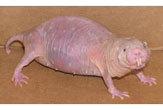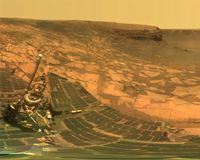OF THE
TIMES

|
| ©Rochelle Buffenstein/City College of New York |
| Even though it is sensitive to touch, the naked mole rat doesn't even flinch when inflicted with burning acid. |
The International Council for Science recently recognized that the societal implications (social, cultural, political and economic) of a comet/asteroid impact on Earth warrants an immediate consideration by all countries in the world.Wow! You think? You mean it's not just us here at SOTT (and a few others on the net) who are keeping track of the increasing number of Fireballs and Meteorites that suggest we are passing through rather dangerous areas of space, or that maybe Something Wicked This Way Comes?
Until quite recently, research into comet and asteroid hazards was focused on establishing the scale and scope of past impacts, credible estimates of their recurrence, and models for physical impact scenarios. ... CAI hazards have moved well beyond the realm of ungrounded speculation and apocalyptic visions. The results represent more than just new findings. They revolutionize, or are about to revolutionize, some basic understandings about the Earth, its history, biological evolution and future. Although human life has had a tiny place in the story so far, our longer term fate seems to be challenged by these forces and may be decided by them.No kidding.
It would have been ridiculous, not too long ago, to admit openly that you were thinking about asteroids and comets slamming into the Earth. Such events could mean the end of the world as we know it - TEOTWAWKI as millenialists call it - and that kind of talk is often ridiculed. ...I located the General's comments and they are now in the SOTT database. It seems that the above is not all the general said. In fact, he states quite unequivocally:
Respectable people are pondering the issues. For example, S. Pete Worden, who is a Brigadier General in the US Air Force and Deputy Director for Command and Control Headquarters at the Pentagon, has said that he believes "we should pay more attention to the 'Tunguska-class' objects - 100 meter or so objects which can strike up to several times per century with the destructiveness of a nuclear weapon."
I can show people evidence of real strikes inflicting local and regional damage less than a century ago. Even more compelling are the frequent kiloton-level detonations our early warning satellites see in the earth's atmosphere. ... Within the United States space community there is a growing concern over "space situational awareness."The general was writing back in 2000. "Less than a century ago." That would be after 1900. He said that there were "real strikes inflicting local and regional damage" since 1900?!

|
| ©NASA/JPL-Caltech/Cornell University |
Comment: 'Highly reliable' source might be something of a stretch, considering the people involved with this project. Fascinating, though, how much attention this is getting and the spin being put on it - even Bill Gates is being tied into it - now why would that be happening?